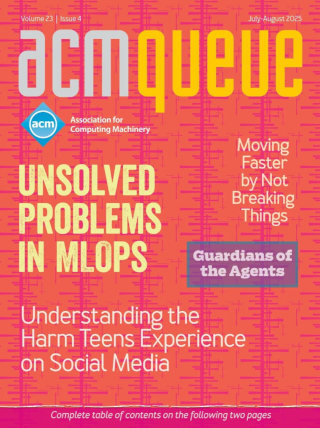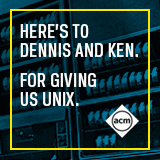
Bringing IT All Together:
A piecemeal approach to building data centers that relies on commodity servers, switches and systems management software only leads to inefficient systems that add unnecessary cost and management overhead to IT operations. In an interview with Queuecast host Mike Vizard, Liquid Computing CTO and co-founder Mike Kemp offers a fresh approach to enterprise computing.
A piecemeal approach to building data centers that relies on commodity servers, switches and systems management software only leads to inefficient systems that add unnecessary cost and management overhead to IT operations. In an interview with Queuecast host Mike Vizard, Liquid Computing CTO and co-founder Mike Kemp offers a fresh approach to enterprise computing.
SIP: Basics and Beyond:
More than just a simple telephony application protocol, SIP is a framework for developing communications systems.
Chances are you’re already using SIP (Session Initiation Protocol). It is one of the key innovations driving the current evolution of communications systems. Its first major use has been signaling in Internet telephony. Large carriers have been using SIP inside their networks for interconnect and trunking across long distances for several years. If you’ve made a long-distance call, part of that call probably used SIP.
Unified Communications with SIP:
SIP can provide realtime communications as a network service.
Communications systems based on the SIP (Session Initiation Protocol) standard have come a long way over the past several years. SIP is now largely complete and covers even advanced telephony and multimedia features and feature interactions. Interoperability between solutions from different vendors is repeatedly demonstrated at events such as the SIPit (interoperability test) meetings organized by the SIP Forum, and several manufacturers have proven that proprietary extensions to the standard are no longer driven by technical needs but rather by commercial considerations.
APIs with an Appetite:
Time for everyone’s favorite subject again: API design. This one just doesn’t get old, does it? Well, OK, maybe it does, but leave it to Kode Vicious to inject some fresh insight into this age-old programming challenge. This month KV turns the spotlight on the delicate art of API sizing.
Dear KV, This may sound funny to you, but one of my co-workers recently called one of my designs fat. My project is to define a set of database APIs that will be used by all kinds of different front-end Web services to store and retrieve data. The problem is that a one-size-fits-all approach can’t work because each customer of the system has different needs. Some are storing images, some are storing text, sound, video, and just about anything else you can imagine. In the current design each type of data has its own specific set of APIs to store, search, retrieve, and manipulate its own type of data. If I constrain the API too much, then some group won’t be able to use it and will build its own local API. That means we will lose the advantages of having a central store for all different types of data. As it stands now, there are about 500 different API calls in the library. Is that too fat?
A Conversation with Cullen Jennings and Doug Wadkins:
Getting the lowdown on SIP
In our interview this month, Cisco Systems’ Cullen Jennings offers this call to arms for SIP (Session Initiation Protocol): "The vendors need to get on with implementing the standards that are made, and the standards guys need to hurry up and finish their standards." And he would know. Jennings has spent his career both helping define IP telephony standards and developing products based on them. As a Distinguished Engineer in Cisco’s Voice Technology Group, Jennings’s current work focuses on VoIP, conferencing, security, and firewall and NAT traversal. His primary responsibility is setting the direction of the technology that will make up the next generation of Cisco’s voice products, especially those concerned with conferencing, presence, and rich media systems.
Decentralizing SIP:
If you’re looking for a low-maintenance IP communications network, peer-to-peer SIP might be just the thing.
SIP (Session Initiation Protocol) is the most popular protocol for VoIP in use today.1 It is widely used by enterprises, consumers, and even carriers in the core of their networks. Since SIP is designed for establishing media sessions of any kind, it is also used for a variety of multimedia applications beyond VoIP, including IPTV, videoconferencing, and even collaborative video gaming.
From Liability to Advantage: A Conversation with John Graham-Cumming and John Ousterhout:
Software production has become a bottleneck in many development organizations.
Software production (the back-end of software development, including tasks such as build, test, package and deploy) has become a bottleneck in many development organizations. In this interview Electric Cloud founder John Ousterhout explains how you can turn software production from a liability to a competitive advantage.
Making SIP Make Cents:
P2P payments using SIP could enable new classes of micropayment applications and business models.
The Session Initiation Protocol (SIP) is used to set up realtime sessions in IP-based networks. These sessions might be for audio, video, or IM communications, or they might be used to relay presence information. SIP service providers are mainly focused on providing a service that copies that provided by the PSTN (public switched telephone network) or the PLMN (public land mobile network) to the Internet-based environment.
As Big as a Barn?:
Taking measure of measurement
The Texas rancher is trying to impress the English farmer with the size of his property. "I can drive out at dawn across my land, and by sundown I still haven’t reached my ranch’s borders." The Englishman nods sympathetically and says, "Yes, yes, I know what you mean. I have a car like that, too."
Arm Your Applications for Bulletproof Deployment: A Conversation with Tom Spalthoff:
Companies can achieve a reliable desktop environment while reducing the time and cost spent preparing high-quality application packages.
The deployment of applications, updates, and patches is one of the most common - and risky - functions of any IT department. Deploying any application that isn’t properly configured for distribution can disrupt or crash critical applications and cost companies dearly in lost productivity and help-desk expenses - and companies do it every day. In fact, Gartner reports that even after 10 years of experience, most companies cannot automatically deploy software with a success rate of 90 percent or better. In this ACM Premium Queuecast with host Mike Vizard, installation expert Tom Spalthoff from Macrovision discusses how companies can achieve a reliable desktop environment while reducing the time and cost spent preparing high-quality application packages that deploy successfully.
Repurposing Consumer Hardware:
New uses for small form-factor, low-power machines
These days you have to be more and more creative when tackling home technology projects because the inventory of raw material is changing so rapidly. Market and product cycles continue to shrink, standard form factors are being discarded to drive down costs, and pricing is becoming more dependent on market value and less on direct manufacturing cost. As a result, standard modular building blocks are disappearing. New alternative uses for obsolete or low-price products are emerging, however. I enjoy finding ways to extract new value from new or used hardware platforms, so I think it’s still a good time to be a technology hobbyist.



